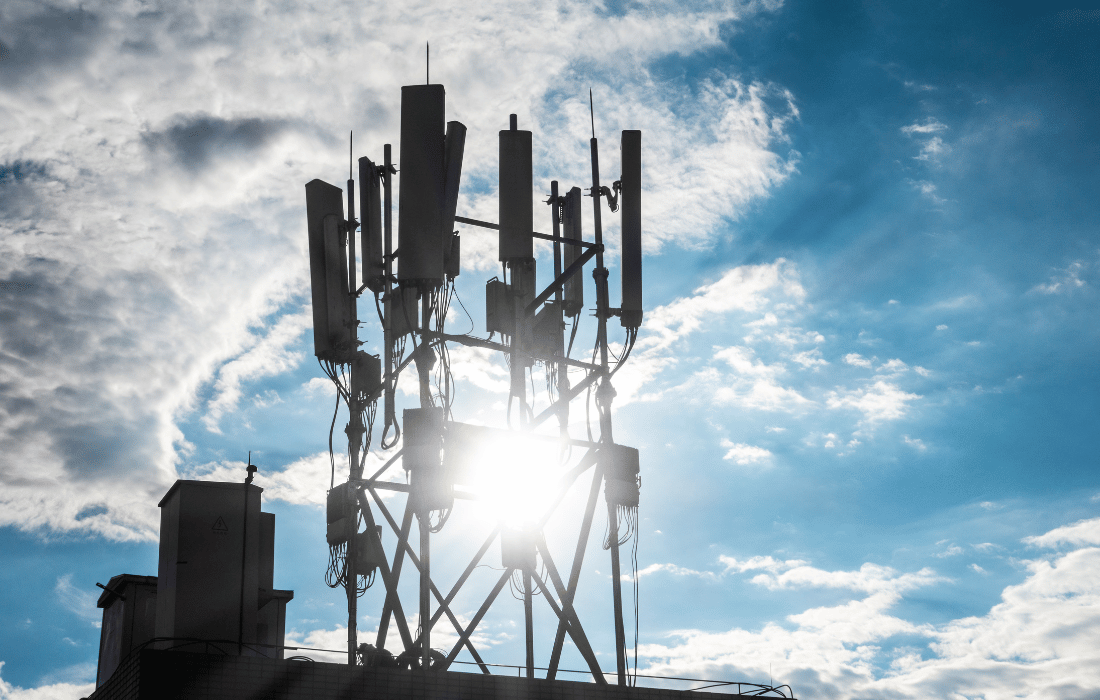In the fast-evolving world of wireless tech, electromagnetic fields (EMFs) are everywhere, from the phones in our pockets to the Wi-Fi signals surrounding us. Many of us have a basic understanding of EMFs and their possible health effects, but a deep dive into their potential biological impacts reveals a more complex and concerning picture. One pivotal 2014 study examines what we know—and what we don’t—about EMFs’ influence on human health.
This study doesn’t hold back in detailing the potential consequences, from oxidative stress and DNA damage to changes in sleep patterns and reproductive health. It also highlights the glaring research gaps that hinder our full understanding of EMFs. Let’s dig into Advances in Biology’s analysis and the hidden risks of our everyday exposures.
Dissecting the Study’s Core Findings
Singh and Kapoor start by acknowledging that while EMFs are now inescapable, their effects on our health are far from straightforward. The research community, divided on the matter, has yet to reach a consensus, but the evidence pointing to biological interference is mounting. Their study underscores a critical issue: although thermal effects (heating tissue) have been the basis for EMF safety standards, it’s the nonthermal, biological effects of EMFs that may pose greater risks.
Here are some of the key areas they explored.
Electromagnetic Hypersensitivity (EHS)
EHS is one of the most controversial issues around EMF exposure. According to the study, between 1–3% of the population may experience symptoms such as headaches, fatigue, and cognitive disruptions linked to EMF exposure. Yet, the scientific community remains divided on whether EHS is a real condition caused by EMFs or more psychosomatic in nature. Many studies report EHS symptoms without clear biological markers, making it difficult to diagnose or treat.
The authors point to the work of researchers who studied radar workers and people living near mobile phone base stations, who reported symptoms such as itching, skin redness, palpitations, and even depression. Singh and Kapoor argue that the sheer prevalence of EHS-like complaints, even if not definitively proven to be linked to EMFs, demands more serious scientific attention.
Oxidative Stress and DNA Damage
One of the study’s most compelling findings is the link between EMFs and oxidative stress. EMFs appear to extend the lifespan of reactive oxygen species (ROS)—molecules that can damage cells when left unchecked. This oxidative stress cascade, the study notes, can damage DNA and other cellular structures, setting the stage for a host of chronic conditions.
Singh and Kapoor provide data showing that even at low exposure levels, EMFs can increase ROS, potentially overwhelming the body’s antioxidant defenses. This increase in oxidative stress might lead to DNA strand breaks, a precursor to cellular mutations and even cancer. With some research highlighting DNA alterations in exposed individuals, the potential for lasting genetic damage is a significant concern.
Cancer: The Long-Term Risk
Few health issues spark as much debate in the EMF community as cancer. Singh and Kapoor’s study doesn’t claim EMFs definitively cause cancer but raises concerns over prolonged exposure, especially in children, whose developing bodies might be more vulnerable. They cite studies linking long-term mobile phone use with an increased risk of brain tumors, especially on the side of the head where the phone is typically held.
One particularly disturbing correlation noted in the study is the link between ELF-EMFs (extremely low-frequency EMFs) and childhood leukemia. The International Agency for Research on Cancer (IARC) has even classified ELF-EMFs as “possibly carcinogenic.” While the mechanisms aren’t yet fully understood, the association alone suggests that more in-depth, long-term studies are needed—particularly as EMF exposure becomes increasingly widespread.
Disruption to the Endocrine System
EMFs may also interfere with our endocrine system, which regulates hormones throughout the body. One of the most sensitive hormones is melatonin, a key regulator of sleep and an important antioxidant. The study highlights research showing that people exposed to EMFs, like electric utility workers and mobile phone users, had decreased melatonin levels compared to unexposed groups. Melatonin suppression doesn’t just disrupt sleep; it also weakens immune function and may make the body more susceptible to illness and oxidative stress.
Besides melatonin, the study found that EMFs could influence cortisol, a stress hormone, and testosterone, raising questions about reproductive health. While there’s still no clear causal pathway, the implications for hormonal balance and health are serious enough to warrant further investigation.
Biological Mechanisms of EMF Impact
The study explores several biological mechanisms that may explain how EMFs interact with human tissues. These nonthermal effects are crucial because they occur at exposure levels deemed “safe” under current guidelines.
Oxidative Stress
We’ve touched on oxidative stress, but Advances in Biology goes deeper into the mechanisms. EMFs appear to lengthen the life of free radicals through a process called the Fenton reaction, where reactive molecules stay active longer and cause more cellular harm. This prolonged exposure to ROS may be the primary way EMFs create cellular stress, setting the stage for inflammation, cell damage, and DNA disruption.
Calcium Ion And Nervous System Disruption
While EMFs’ impact on overall health is broad, the 2014 study also demonstrates specific threats to the nervous system. The nervous system, highly sensitive to even small shifts in environmental conditions, may be vulnerable to EMF exposure through mechanisms that disrupt cellular function and communication between neurons.
The study references findings where EMFs influence calcium ion channels, critical for neuronal signaling. Disruption in calcium signaling can lead to “excitotoxicity,” a condition where neurons become overstimulated and potentially damaged. This is concerning because excitotoxicity is linked to neurodegenerative conditions such as Alzheimer’s and Parkinson’s disease. Additionally, EMFs may interfere with neurotransmitter levels, impacting brain functions like mood, memory, and focus.
Researchers also point to the blood-brain barrier (BBB) as a possible area of vulnerability. The BBB, which protects the brain from harmful substances, can become more permeable under EMF exposure, potentially allowing toxins to enter the brain. This compromise could increase the brain’s susceptibility to damage over time, especially with chronic EMF exposure.
Melatonin Suppression
One of the study’s more eye-opening points is the hypothesis that EMFs interfere with melatonin production by simulating daylight to the retina. By suppressing melatonin, EMFs disrupt not only sleep but also the body’s ability to repair and protect itself against oxidative damage. The study underscores melatonin’s role as a natural antioxidant and anti-cancer agent, suggesting that long-term EMF exposure could have cumulative effects on our bodies’ resilience to stress and illness.
EMF Effects on Reproductive Health: A Warning Sign?
The reproductive system may be especially sensitive to EMF exposure. According to Singh and Kapoor, studies in animal models reveal that EMF exposure can reduce sperm count and increase abnormalities in sperm cells, potentially lowering fertility. While human studies are limited, data suggests that men who carry phones in their pockets or work in high-EMF environments may be at a greater risk of fertility issues.
For women, there is evidence that EMFs could influence hormone levels and menstrual cycles, with some studies noting that even short-term EMF exposure can elevate stress hormones like cortisol. While it’s not conclusive, the potential for EMFs to impact reproductive health is a warning sign, especially in a society where EMF exposure is only increasing.
Research Gaps: Why We’re Still in the Dark
Singh and Kapoor are unflinchingly honest about the limitations of current EMF research. Here are some key obstacles they highlight:
Short-term Studies: Many studies don’t account for cumulative exposure. Without long-term data, it’s hard to assess the real impact of EMFs over years or decades.
Methodological Inconsistency: Studies vary widely in exposure levels, frequencies, and biological endpoints, which makes comparing results and drawing broad conclusions difficult.
Funding and Bias: Industry-funded studies tend to report fewer adverse effects, raising questions about the objectivity of certain research.
Inadequate Exposure Measurement: Self-reports and rough estimates of exposure fall short of capturing the complexity of real-world EMF interactions. Accurate measurement tools like personal exposimeters are crucial but are rarely used in studies.
The authors call for better-designed research, with standardized methods and long-term follow-up, to close these gaps. Without consistent, unbiased studies, it will remain challenging to understand the full extent of EMF effects on human health.
Moving Forward: Practical Precautions in a Wireless World
While we wait for the scientific community to catch up with the rapid expansion of EMF exposure, Singh and Kapoor recommend a precautionary approach. The authors endorse the principle of “as low as reasonably achievable” (ALARA), which essentially means limiting EMF exposure wherever possible.
- Avoid sleeping with your phone nearby, especially if it’s charging.
- Opt for wired connections instead of Wi-Fi where possible, particularly for essential devices.
- Limit Bluetooth use, especially wireless earbuds that sit close to your brain.
- Keep your devices at a distance rather than in pockets or directly on your body.
Conclusion: A Call for Change in EMF Awareness and Safety
EMFs have quietly woven themselves into every facet of modern life, but studies like this one remind us that their impact may not be benign. From oxidative stress and potential DNA damage to disruptions in melatonin and fertility, Advances in Biology’s work reveals a range of biological effects that go beyond the visible. And while we don’t have all the answers yet, the growing body of evidence should encourage us to take precautions in our daily lives.
If there’s one takeaway from this study, it’s that we shouldn’t dismiss EMFs as harmless simply because we can’t see them. A growing number of researchers are now calling for stricter guidelines and comprehensive studies on long-term EMF exposure. As consumers, staying informed and proactive may be our best defense in navigating this invisible, potentially hazardous landscape.











